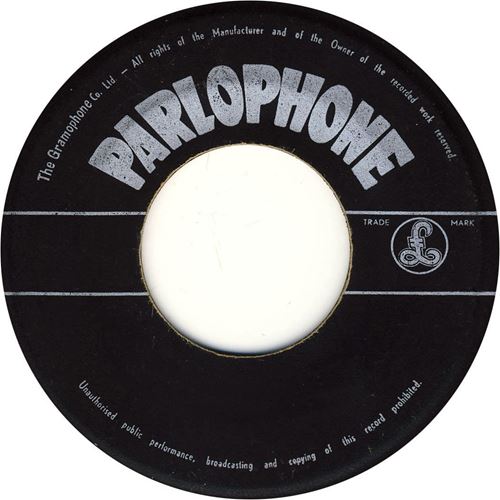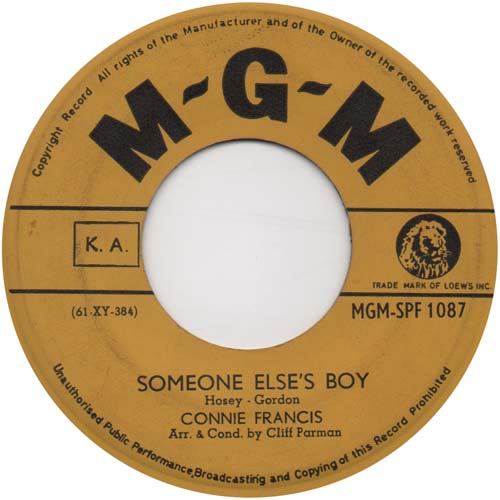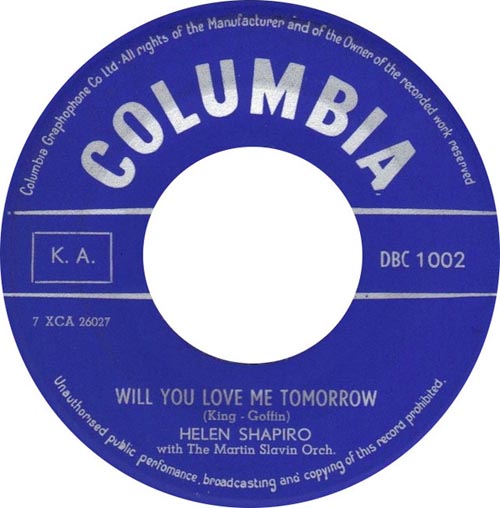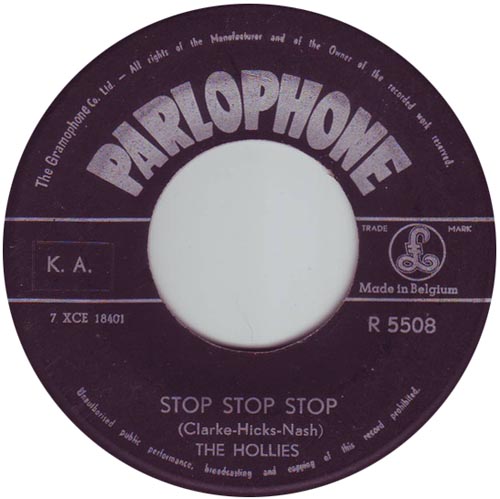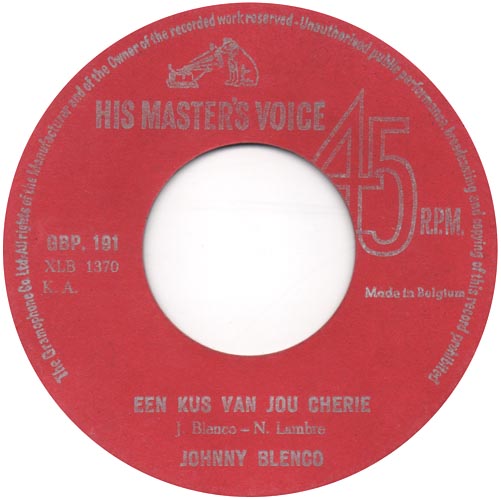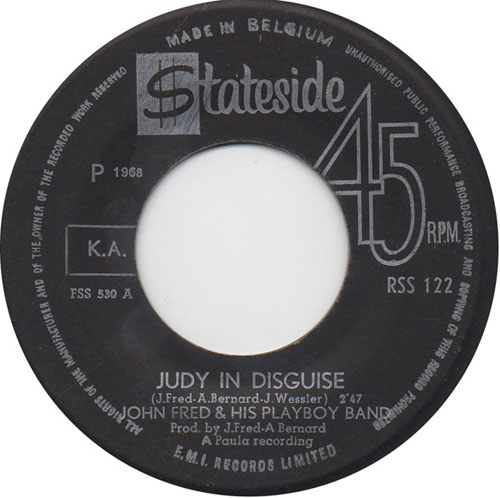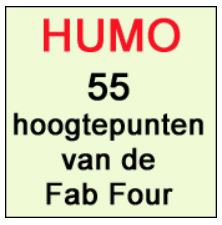Belgian EMI / GRAMOPHONE releases
1958-1968
Zoals we hierboven zien is het Belgische Parlophone label afgeleid van het Engelse Parlophone label dat werd gebruikt van 1953 tot januari 1963. Links op het Engelse label staat de uitgeversmaatschappij (Publishing Company). Gramophone België vermeldt zelden een uitgeversmaatschappij en past erg veel een boekhoudkundige truc toe door de afkorting ‘K.A.’ te gebruiken. Deze manier van werken werd ook in Duitsland (Keep a/c) en Frankrijk (D.R. of Droits Réservées) gebruikt. De afkorting ‘K.A.’ staat voor ‘Keep Account’. Vrij vertaald: bijhouden in de boekhouding. Principe: het aantal in België geperste en verdeelde singles min het aantal door de platenwinkels niet-verkochte (en teruggestuurde) singles werd door Gramophone Belgium bijgehouden. Per verkochte single betaalde Gramophone Belgium achteraf de rechten aan de auteursrechtenorganisatie SABAM of de overkoepelende internationale organisatie BIEM. SABAM/BIEM stortte het bedrag dan door aan haar Britse zustermaatschappij MCPS (Mechanical Copyright Protection Society), die het bedrag op haar beurt betaalde aan de uitgeversmaatschappijen van The Beatles zoals daar waren: Ardmore & Beechwood Ltd., Dick James Music of Northern Songs Ltd. Vanaf maart 1968 mocht Gramophone België geen K.A. meer plaatsen op het label.
Typische kenmerken van een Belgische PARLOPHONE persing tussen 1964 en 1967:
As we see above, the Belgian Parlophone label is derived from the English Parlophone label that was used from 1953 until January 1963. On the left side of the English label is the publishing company. In Belgium, the publishing company is almost never mentioned. EMI/Gramophone Belgium often applies a trick by using the abbreviation ‘K.A.’. This abbreviation means ‘Keep Account’. This way of working was also used in Germany (Keep a/c) and France (D.R. or Droits Réservées). Principle: Gramophone Belgium calculated the difference between the Belgian-made singles distributed to the record shops minus the returned 45T’s. For the records sold in Belgium, the record company paid the rights to the Belgian copyright organisation SABAM or the international organisation BIEM. SABAM/BIEM then passed the amount to its British sister company MCPS (Mechanical Copyright Protection Society), which in turn deposits the amount to the publishing company of The Beatles as there were at the time: Ardmore & Beechwood Ltd., Dick James Music and Northern Songs Ltd. From march 1968 onwards, Gramophone Belgium wasn’t allowed to use K.A. anymore.
Typical characteristics of a Belgian Beatles PARLOPHONE pressing between 1964 – 1967:
Typisch Belgische EMI/Gramophone labels met vermelding “K.A.” 1958-1968
Typical “K.A.” Labels distributed by EMI/Gramophone Belgium. 1958-1968
Ruby Red/ Tom Dooley – The Kingston Trio (Capitol 1958)
I Love You/ ‘D’ In Love – Cliff Richard (Columbia 1960)
Someone Else’s Boy/ Breakin’ In Brand New Broken Heart – Connie Francis (MGM 1961)
Will You Love Me Tommorow/ Sweet Nothings – Helen Shapiro (Columbia 1963)
Rock And Roll Music/ I’m A Loser – The Beatles (Odeon 1965)
Stop Stop Stop/ It’s You – The Hollies (Parlophone 1966)
Een Kus Van Jou Cherie/ Donna Maria – Johnny Blenco (HMW 1967)
Judy In Disguise/ Out Of Left Field – John Fred & His Playboy Band (Stateside 1968). This was one of the very last Belgian releases with the abbreviation’ K.A.’ on the label.

